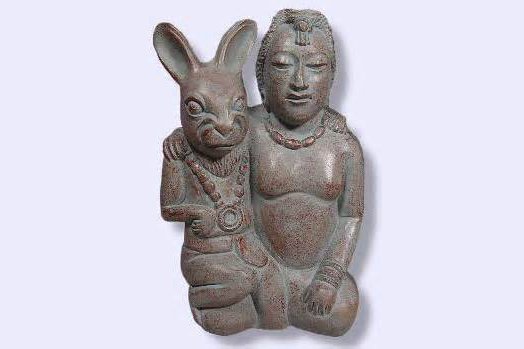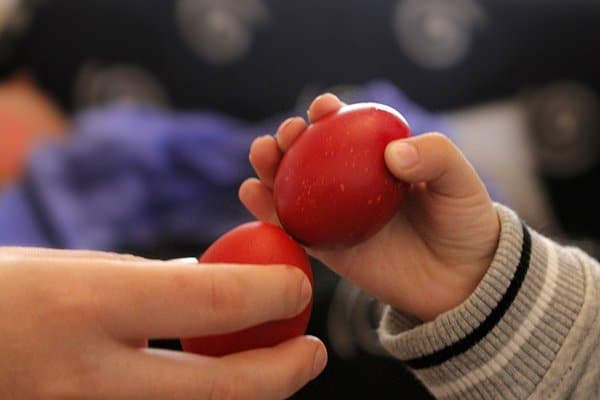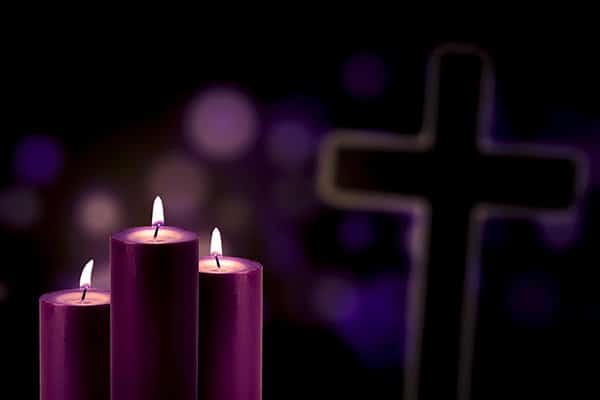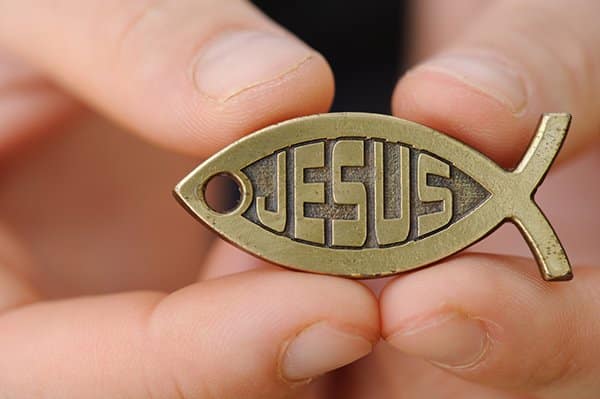As we’ve talked about in the past, Easter occurs (both Catholic and Orthodox) every first Sunday after the first full moon after the March Equinox. But along with Easter and the celebrations of the resurrection of the Lord Jesus Christ, come the traditions of the Easter bunny and Easter eggs. You don’t need to be too far into your schooling to realise that rabbits are mammals and don’t lay eggs like birds or reptiles. So what is this link between these two, as well as Jesus? Well, it’s a long story. But we’ll try and keep it as short as possible.
The word Easter

The word Easter itself in the modern English language form is still up for debate. According to Catholic historical books, Easter comes from the name Estre, a Tuetonic Goddess of the rising light of day and spring. In other languages, she was known as Ostare, Ostara, Ostern, Eostra, Eostre, Eostur, Eastrea, Eastur, Austron and Ausos.
Eostre the Anglo-Saxon goddess of spring fertility while ancient Egyptians had Ishtar: Babylonian goddess of fertility, love, war and sex.
Some have even suggested that the word Easter finds its root in the German word for resurrection: auferstehung.
The Pagan Origin of Easter

To understand all of our modern day Easter traditions, you actually need to look beyond Christianity history and back further into that of the Pagans.
The Pagans celebrated “Ishtar” (pronounced very similar to “Easter”) which was a day that also celebrated a resurrection. That of one of their gods known as “Tammuz”. He was believed to be the only son of the moon-goddess and the sun-god.
Tammuz came along in a very similar way to Jesus Christ. His mother was a powerful queen of Babylon named Semiramis. After her husband died, Semiramis married her own son who was named Nimrod. Nimrod therefore became a powerful king. Semiramis would unfortunately become a widow again when her son/husband was killed by an enemy.
To make matters worse, Nimrod’s body was cut into pieces and sent to all parts of the kingdom.
Queen Semiramis also stated that Baal would be present on earth in the form of fire, be it a candle or lamp. She also proclaimed that the moon was a goddess that went through a 28 day cycle and the full moon was a sign of her ovulation.
Where the Easter Bunny first came along

Semiramis would go on to have another child. She fell pregnant, but the father was not among the living. The father was in fact “Baal”, her former husband/son and now sun God. Instead of sperm, the sun’s rays were the source of her immaculate conception.
So along comes a baby boy named Tammuz. Little Tammuz was so fond of rabbits that his mother would soon declare them sacred.
Unfortunately, Tammuz was killed by a wild boar when hunting. His mother told her people that he was now in the sun with his father. But each year, Semiramis declared there be a 40 day period of sorrow before the anniversary of his death and no meat was to be eaten in this time. Much similar to the Catholic tradition of lent.
The history of hot cross buns

Every year, on the first Sunday after the first full moon after the spring equinox, Semiramis made everyone mourn the death of her son. It was known as Ishtar’s Sunday and was celebrated with rabbits and eggs.
Another tradition we see mimicked today is hot cross buns. As worshippers were praying to Baal and Tammuz they would make the sign of the “T” in front of their hearts as they worshipped. This led to sacred cakes with the marking of a “T” or cross on the top.
Where the Easter Egg was born
As well as her claims about her husband/son becoming the sun God, Semiramis foretold that she came down from the moon in a giant egg that fell into the Euphrates River. She said that this happened at the time of the first full moon after the spring equinox. This is also the date known as Easter Sunday, as we call it in our society (Orthodox Easter date varies, click here to see why). This egg became known as “Ishtar’s egg”.
Orthodox Easter red eggs

For those of the Orthodox Christian faiths, the egg symbolises the empty rock tomb from which Jesus Christ arose after his Crucifixion. It is a universal means of greeting and presentation for Christian believers, while it also foretells the eternal life experience awaiting true believers after death.
A symbol of fertility and immortality among all nations and eras of the human civilisation, the egg appears to be empty within, but life spreads out of it when a bird hatches from it. According to folklore, the original chaos of the world was contained in an egg, which broke into two halves, one forming the sky and the other the earth.
Red is the colour of life and victory. The custom of the Easter egg originated amongst the early Christians of Mesopotamia, who stained eggs red in memory of the precious blood of Christ, which was on the cross for the salvation of all men.
The Christian Church officially adopted the custom, regarding the red eggs as a symbol of the resurrection. Most stories link Mary Magdalene to the red Easter eggs custom or other female figures.
The not so fun red eggs history

The Pagan red eggs origin is not such a nice story. When Semiramis finally died, she was known as “the mother of god” and the Gods sent her back to earth as the spring fertility goddess. In ancient scripture and artwork, she is depicted as an exaggeratedly endowed bare breasted queen of sexual desire.
As the cult developed after her death, the priests of Easter would impregnate young virgins on the altar of the goddess of fertility at sunrise on Easter Sunday. A year later the priests of Easter would sacrifice those three-month-old babies on the altar at the front of the Sanctuary and dye Easter eggs in the blood of the sacrificed infants. We’re much better off with chocolate eggs these days. Yeesh.
The history of Lent

For six weeks every year, those of the Catholic faith test themselves in a period of time called Lent. This time starts at Ash Wednesday, named so as some will draw a cross on their foreheads using ash. Many will give up meat or even fast. Some also will give up a favourite food item for the six weeks. The 40 days signify Jesus’ journey through the desert for that amount of time. So in a way, it’s recognition for the suffering he entailed.
The word itself comes from the old English word Lenten which means “spring season”. The Dutch word for this is still lente and German is lenz.
Why Catholics don’t eat meat, but will eat fish

Many Catholics will stop eating meat for the duration of lent and this was established by the church way back in the early ADs, but the interpretations have changed. In a 1966 document, “Apostolic Constitution on Penance” by Pope Paul VI changed up the Church’s practice in this regard. Paul VI determined that while meat was not allowed, eggs, milk products or condiments made of animal fat were now permitted. So why is meat given up? Basically it’s because meat is associated with celebrations and in ancient times it was a real treat rather than a daily staple. The main aim for lent is to give up something you like. Vegetarianism wasn’t common in ancient times.
Why fish is often not considered forbidden and even encouraged on these days is not really known. Some theories include that God specified that only land animals are forbidden while some say it’s because the fishing industry was extremely vital for the economy in ancient times.
Celebrate Easter at Lantern Club
Lantern Club celebrates Easter every year with raffles, promotions and MaZi specials. Keep up to date by liking us on Facebook.

